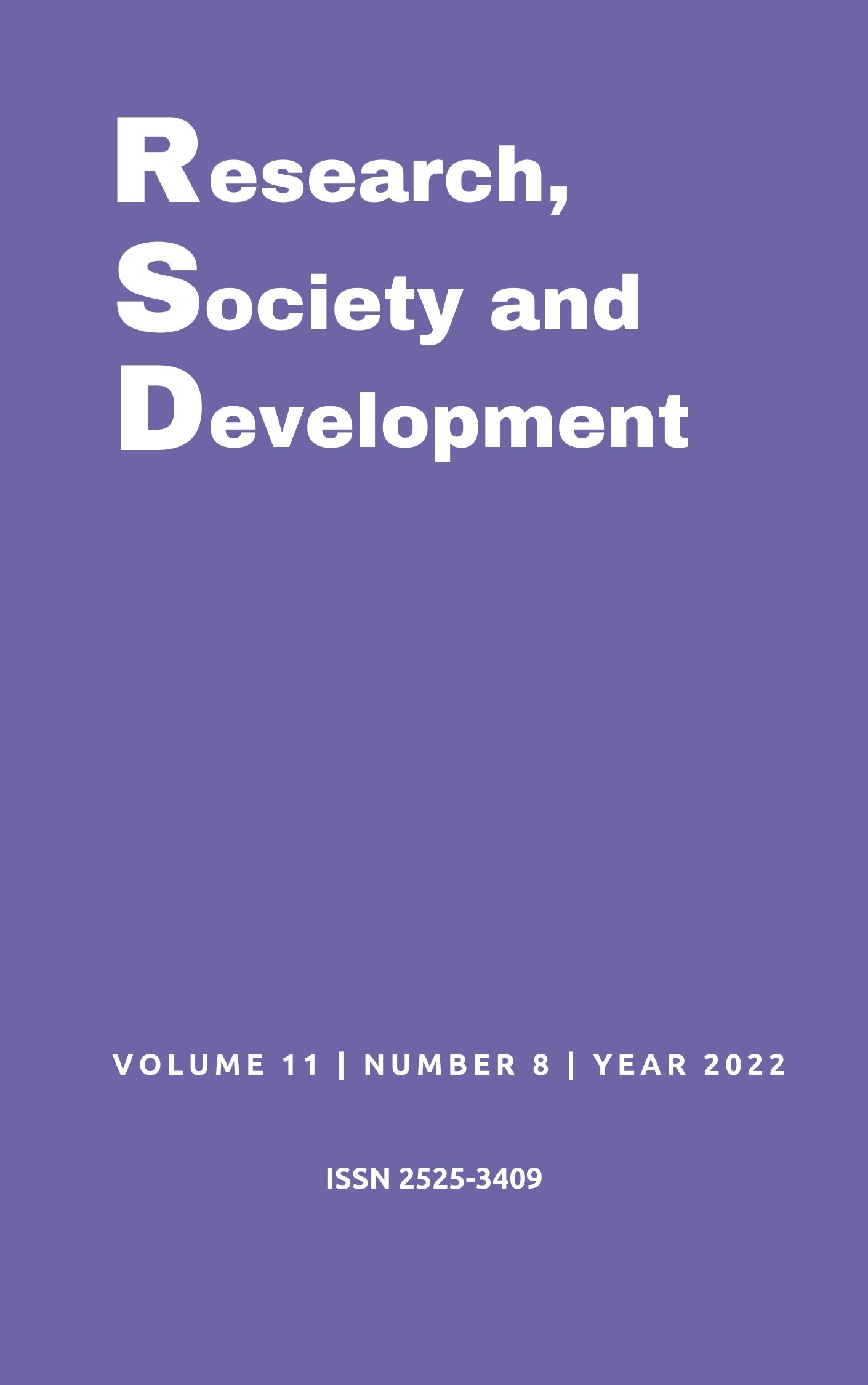Experimental network performance evaluation for human-robot interaction collision detection using cameras
DOI:
https://doi.org/10.33448/rsd-v11i8.30543Keywords:
AMQP, MQTT, Network communication, Human Robot Interaction, Teaching.Abstract
A practical solution to human-robot collision detection using devices commonly found in workplaces, such as 2D cameras, requires thorough planning and evaluation of network restrictions that may deny timely access to and process important context data collected by IoT devices. In this study, we evaluate the behavior of the AMQP and MQTT application protocols for camera image transmission. We examine the packet overhead for each protocol when streaming video signals. Also, we evaluate the impact of transmission delay on the total decision time starting from the moment the camera captures an image to the moment it is decided if there is a robot-human collision or not. Finally, we also evaluated an open-source platform to emulate wireless Mininet-wifi, seeking to understand the level of influence it would have on the results. The results show that transmission overhead represents as much as 80% of the total decision time and that the AMQP protocol takes around 5% less transmission time than MQTT. The results also show that the use of hardware accelerators such as a GPU increases by 37 times the number of detections. We found that the size of the image to be transmitted and wireless communications did not influence the results for our scenario. In addition, we also noticed that the use of emulation through Mininet-wifi does not negatively influence the behavior of the experiments.
References
Breivold, H. P., & Sandstrom, K. (2015). Internet of Things for Industrial Automation -- Challenges and Technical Solutions. 2015 IEEE International Conference on Data Science and Data Intensive Systems. https://doi.org/10.1109/dsdis.2015.11
Embitel. (2018). 7 Most Commonly Used Sensors for Developing Industrial IoT Solutions. Available in:. https://www.embitel.com/blog/embedded-blog/7-most-commonly-used-sensors-for-developing-industrial-iot-solutions.
Fontes, R. R., Afzal, S., Brito, S. H. B., Santos, M. A. S., & Rothenberg, C. E. (2015). Mininet-WiFi: Emulating software-defined wireless networks. 2015 11th International Conference on Network and Service Management (CNSM). https://doi.org/10.1109/cnsm.2015.7367387
Gemirter, C. B., Senturca, C., & Baydere, S. (2021). A Comparative Evaluation of AMQP, MQTT and HTTP Protocols Using Real-Time Public Smart City Data. 2021 6th International Conference on Computer Science and Engineering (UBMK). https://doi.org/10.1109/ubmk52708.2021.9559032
Halder, M., Sheikh, M. N., Rahman, M., Rahman, M. (2018, 07). Performance analysis of coap, 6lowpan and rpl routing protocols of iot using cooja simulator. International Journal of Scientific and Engineering Research, 9 , 1671-1677.
Jaloudi, S. (2019). Communication Protocols of an Industrial Internet of Things Environment: A Comparative Study. Future Internet, 11(3). doi:10.3390/fi11030066
Jeong B. Y. (2021). Prevalence of occupational accidents and factors associated with deaths and disabilities in the shipbuilding industry: Comparisons of novice and skilled workers. Work (Reading, Mass.), 69(3), 997–1005. https://doi.org/10.3233/WOR-213530
Jovanović, J. i Jovanović, M. (2004). Occupational Accidents and Injuries: Results of a Safety Preventive Programme. Arhiv za higijenu rada i toksikologiju, 55 (4), 261-268. Preuzeto s https://hrcak.srce.hr/254
Matsas, E., Vosniakos, G.-C. (2017). Design of a virtual reality training system for human–robot collaboration in manufacturing tasks. International Journal on Interactive Design and Manufacturing (IJIDeM), 11 (2), 139– 153.
Microsoft, . D. (2019). 2019 Manufacturing Trends Report. Avail- able in:. https://info.microsoft.com/rs/157-GQE-382/images/EN-US-CNTNT-Report-2019-Manufacturing-Trends.pdf.
Moraes, T., Nogueira, B., Lira, V., & Tavares, E. (2019). Performance Comparison of IoT Communication Protocols. 2019 IEEE International Conference on Systems, Man and Cybernetics (SMC). https://doi.org/10.1109/smc.2019.8914552
Mohammed, A., Schmidt, B., Wang, L. (2017). Active collision avoidance for human–robot collaboration driven by vision sensors. International Journal of Computer Integrated Manufacturing, 30 (9), 970–980.
Naik, N. (2017). Choice of effective messaging protocols for IoT systems: MQTT, CoAP, AMQP and HTTP. 2017 IEEE International Systems Engineering Symposium (ISSE). https://doi.org/10.1109/syseng.2017.8088251
of Labor Statistics, B. (2021). Employer-reported Workplace Injuries and Ill- nesses - 2020. https://www.bls.gov/news.release/pdf/osh.pdf.
Rajak, R., Chattopadhyay, A., Maurya, P. (2021). Accidents and injuries in workers of iron and steel industry in west bengal, india: Prevalence and associated risk factors. International Journal of Occupational Safety and Ergonomics, 0 (0), 1-8. Retrieved from https://doi.org/10.1080/ 10803548.2021.2012021 (PMID: 34842067) doi: 10.1080/10803548.2021
.2012021
Silva, I. R. R., Barbosa, G. B. N., Ledebour, C. C. D., Filho, A. T. O., Kelner, J., Sadok, D., … Souza, R. (2020). Assessing Deep Learning Models for Human-Robot Collaboration Collision Detection in Industrial Environments. Intelligent Systems, 240–255. doi:10.1007/978-3-030-61377-8_17
T. Sultana, & K. A. Wahid. (2019). Choice of Application Layer Protocols for Next Generation Video Surveillance Using Internet of Video Things. IEEE Access, 7, 41607–41624. doi:10.1109/ACCESS.2019.2907525
Thangavel, D., Ma, X., Valera, A.C., Tan, H., & Tan, C.K. (2014). Performance evaluation of MQTT and CoAP via a common middleware. 2014 IEEE Ninth International Conference on Intelligent Sensors, Sensor Networks and Information Processing (ISSNIP), 1-6.
Uy, N.Q., & Nam, V.H. (2019). A comparison of AMQP and MQTT protocols for Internet of Things. 2019 6th NAFOSTED Conference on Information and Computer Science (NICS), 292-297.
Y. Wang, X. Ye, Y. Yang, & W. Zhang. (2017). Hand Movement Prediction Based Collision-Free Human-Robot Interaction. doi:10.1109/CVPRW.2017.72
Downloads
Published
Issue
Section
License
Copyright (c) 2022 Assis T. de Oliveira Filho; Gibson Barbosa; Iago Richard Rodrigues; Carolina Cani; Judith Kelner; Djamel Sadok; Ricardo Souza

This work is licensed under a Creative Commons Attribution 4.0 International License.
Authors who publish with this journal agree to the following terms:
1) Authors retain copyright and grant the journal right of first publication with the work simultaneously licensed under a Creative Commons Attribution License that allows others to share the work with an acknowledgement of the work's authorship and initial publication in this journal.
2) Authors are able to enter into separate, additional contractual arrangements for the non-exclusive distribution of the journal's published version of the work (e.g., post it to an institutional repository or publish it in a book), with an acknowledgement of its initial publication in this journal.
3) Authors are permitted and encouraged to post their work online (e.g., in institutional repositories or on their website) prior to and during the submission process, as it can lead to productive exchanges, as well as earlier and greater citation of published work.


